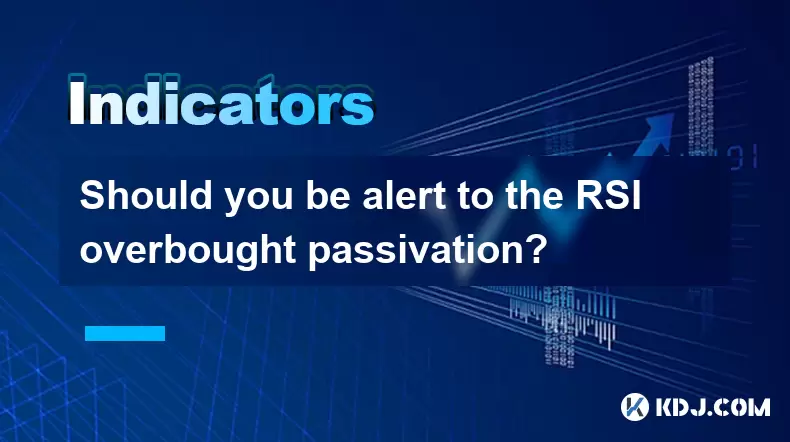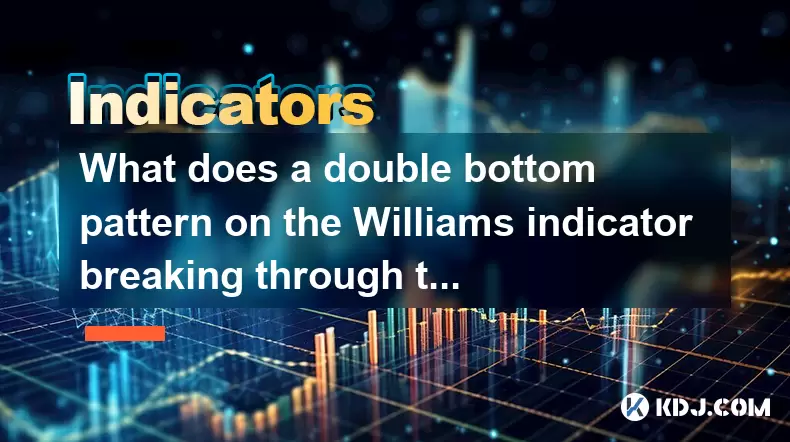-
 Bitcoin
Bitcoin $116400
-0.36% -
 Ethereum
Ethereum $4033
3.40% -
 XRP
XRP $3.302
-1.26% -
 Tether USDt
Tether USDt $1.000
-0.02% -
 BNB
BNB $796.1
1.67% -
 Solana
Solana $177.8
1.89% -
 USDC
USDC $0.9999
0.00% -
 Dogecoin
Dogecoin $0.2314
4.09% -
 TRON
TRON $0.3381
0.14% -
 Cardano
Cardano $0.7989
1.22% -
 Stellar
Stellar $0.4496
-1.84% -
 Chainlink
Chainlink $20.42
9.42% -
 Hyperliquid
Hyperliquid $41.17
0.88% -
 Sui
Sui $3.914
3.77% -
 Bitcoin Cash
Bitcoin Cash $584.7
1.52% -
 Hedera
Hedera $0.2632
-0.54% -
 Avalanche
Avalanche $24.09
3.40% -
 Ethena USDe
Ethena USDe $1.001
-0.02% -
 Litecoin
Litecoin $123.2
1.33% -
 Toncoin
Toncoin $3.318
-0.04% -
 UNUS SED LEO
UNUS SED LEO $8.984
-0.05% -
 Shiba Inu
Shiba Inu $0.00001323
2.85% -
 Uniswap
Uniswap $10.90
4.41% -
 Polkadot
Polkadot $3.999
3.34% -
 Dai
Dai $1.000
0.01% -
 Cronos
Cronos $0.1630
9.64% -
 Bitget Token
Bitget Token $4.484
0.82% -
 Monero
Monero $272.4
2.44% -
 Pepe
Pepe $0.00001173
6.03% -
 Aave
Aave $290.8
2.88%
Should you be alert to the RSI overbought passivation?
RSI overbought passivation occurs when an asset remains overbought without correction, often due to strong bullish trends and high liquidity in crypto markets.
Jun 02, 2025 at 12:21 pm

Understanding the RSI Indicator
The Relative Strength Index (RSI) is a momentum oscillator that measures the speed and change of price movements. Developed by J. Welles Wilder, the RSI is typically used to identify overbought or oversold conditions in a market. The indicator oscillates between 0 and 100, with readings above 70 considered overbought and readings below 30 considered oversold. For traders in the cryptocurrency market, the RSI is a crucial tool for making informed decisions.
The Concept of Overbought Passivation
Overbought passivation refers to a situation where an asset remains in an overbought state for an extended period without experiencing a significant price correction. This phenomenon can be particularly perplexing for traders who rely on the RSI to signal potential reversals. When an asset's RSI remains above 70 for a prolonged time, it may indicate strong bullish momentum rather than an imminent downturn. Understanding this concept is essential for navigating the volatile cryptocurrency markets effectively.
Why RSI Overbought Passivation Occurs
Several factors can contribute to RSI overbought passivation in the cryptocurrency market. Strong bullish trends driven by positive news, institutional investments, or widespread adoption can keep an asset's price and RSI elevated. Additionally, market sentiment plays a significant role; if the majority of traders remain optimistic, the asset may continue to rise despite being technically overbought. Liquidity can also affect the RSI; in a highly liquid market, large trades can sustain high RSI readings without immediate corrections.
The Risks of Ignoring Overbought Passivation
Ignoring RSI overbought passivation can lead to missed opportunities and potential losses. Traders who sell solely based on an overbought RSI reading may exit their positions prematurely, missing out on further gains. Conversely, holding onto an asset without considering other indicators can expose traders to significant drawdowns if a correction eventually occurs. Therefore, it is crucial to be alert to RSI overbought passivation and incorporate it into a broader trading strategy.
Strategies to Navigate RSI Overbought Passivation
To effectively navigate RSI overbought passivation, traders should consider the following strategies:
- Use Multiple Indicators: Relying solely on the RSI can be misleading. Combining the RSI with other technical indicators, such as the Moving Average Convergence Divergence (MACD) or Bollinger Bands, can provide a more comprehensive view of the market.
- Monitor Volume: High trading volume can support sustained overbought conditions. If volume remains high while the RSI is overbought, it may indicate continued bullish momentum.
- Analyze Market Trends: Understanding the broader market trend is essential. If the overall market is in a strong uptrend, an overbought RSI may not signal an immediate reversal.
- Set Stop-Loss Orders: Implementing stop-loss orders can help manage risk during periods of RSI overbought passivation. This allows traders to limit potential losses if a correction occurs.
Practical Example of RSI Overbought Passivation in Cryptocurrency
Consider a scenario where Bitcoin has been trading with an RSI consistently above 70 for several weeks. Despite the overbought signal, Bitcoin's price continues to rise due to positive news about institutional adoption and increased liquidity. A trader who sells Bitcoin based solely on the overbought RSI may miss out on significant gains. Instead, the trader could use the following steps to navigate this situation:
- Check other indicators: Look at the MACD and Bollinger Bands to see if they confirm the bullish trend.
- Monitor volume: Ensure that trading volume remains high, supporting the sustained overbought condition.
- Review market news: Stay updated on any news that could influence Bitcoin's price, such as regulatory developments or institutional investments.
- Adjust stop-loss orders: Set stop-loss orders at strategic levels to protect against potential downturns while allowing for continued upward movement.
The Importance of Context in RSI Interpretation
Context is key when interpreting RSI readings, especially during overbought passivation. Timeframes play a crucial role; an asset might be overbought on a daily chart but not on a weekly chart. Additionally, historical data can provide insights into how an asset has reacted to overbought conditions in the past. By considering these factors, traders can make more informed decisions and avoid knee-jerk reactions to RSI signals.
Case Studies of RSI Overbought Passivation in Cryptocurrencies
Examining real-world examples can help illustrate the concept of RSI overbought passivation. In 2021, Ethereum experienced a prolonged period of overbought RSI readings as it surged to new all-time highs. Despite the overbought signal, Ethereum's price continued to climb due to strong demand and positive market sentiment. Traders who recognized this overbought passivation and adjusted their strategies accordingly were able to capitalize on Ethereum's upward trajectory.
Another example is Cardano, which saw its RSI remain above 70 for several months in 2020. Cardano's price continued to rise despite the overbought condition, driven by significant developments in its ecosystem and growing investor interest. Traders who solely relied on the RSI might have sold Cardano too early, missing out on substantial profits.
Balancing RSI Overbought Signals with Other Factors
Balancing RSI overbought signals with other market factors is essential for effective trading. While the RSI can provide valuable insights, it should not be the sole basis for trading decisions. Fundamental analysis, such as evaluating an asset's technology, team, and adoption, can offer a more complete picture of its potential. Additionally, sentiment analysis tools can help gauge market sentiment, which can influence price movements during overbought passivation.
Frequently Asked Questions
Q: Can RSI overbought passivation occur in all cryptocurrencies?
A: Yes, RSI overbought passivation can occur in any cryptocurrency, but it is more common in assets with strong bullish trends and high liquidity. The likelihood of overbought passivation can vary depending on the specific market conditions and the asset's volatility.
Q: How long can RSI overbought passivation last?
A: The duration of RSI overbought passivation can vary widely, from a few days to several months. It depends on factors such as market sentiment, liquidity, and the strength of the underlying bullish trend. Traders should monitor these factors to anticipate how long the overbought condition might persist.
Q: Are there any specific cryptocurrencies more prone to RSI overbought passivation?
A: Cryptocurrencies with strong fundamentals and high market interest, such as Bitcoin, Ethereum, and Cardano, are more likely to experience RSI overbought passivation. These assets often have sustained bullish trends driven by widespread adoption and positive news, which can keep the RSI elevated for extended periods.
Q: How can I differentiate between a genuine overbought signal and overbought passivation?
A: Differentiating between a genuine overbought signal and overbought passivation requires considering multiple factors. Look at other technical indicators, trading volume, market trends, and fundamental developments. If these factors support continued bullish momentum, it may indicate overbought passivation rather than an imminent reversal.
Disclaimer:info@kdj.com
The information provided is not trading advice. kdj.com does not assume any responsibility for any investments made based on the information provided in this article. Cryptocurrencies are highly volatile and it is highly recommended that you invest with caution after thorough research!
If you believe that the content used on this website infringes your copyright, please contact us immediately (info@kdj.com) and we will delete it promptly.
- HAT Token Mania: Price Surges, Crypto Auctions, and Meme Coin Mayhem
- 2025-08-09 11:10:11
- Undervalued Cryptos Primed for a 2025 Takeoff: MAGACOIN, TRX, and SUI Lead the Pack
- 2025-08-09 11:10:11
- Bitcoin Goes to Harvard: Ivy League Embraces Digital Assets
- 2025-08-09 10:50:12
- Bitcoin, BlockDAG, and Toncoin: Decoding the Crypto Buzz in NYC
- 2025-08-09 11:30:11
- XRP, Pi Network, and Binance Listing Buzz: What's the Hype?
- 2025-08-09 11:30:11
- Arctic Pablo Coin: The Meme Coin Presale Promising High ROI in Q3 2025
- 2025-08-09 10:50:12
Related knowledge

What does it mean when the Triple Moving Average (TRIX) turns downward but the price doesn't fall?
Aug 09,2025 at 12:42pm
Understanding the Triple Moving Average (TRIX) IndicatorThe Triple Moving Average, commonly known as TRIX, is a momentum oscillator designed to filter...

What does it mean when the Williams' oscillator repeatedly hits bottoms but fails to rebound?
Aug 09,2025 at 09:28am
Understanding the Williams %R OscillatorThe Williams %R oscillator, developed by Larry Williams, is a momentum indicator used in technical analysis to...

What does a double bottom pattern on the Williams indicator breaking through the 50-day midline indicate?
Aug 09,2025 at 10:56am
Understanding the Williams %R IndicatorThe Williams %R indicator, developed by Larry Williams, is a momentum oscillator that measures overbought and o...

What does it mean when the MACD-histogram turns from green to red but the DIF line fails to form a golden cross?
Aug 09,2025 at 10:15am
Understanding the MACD and Its ComponentsThe MACD (Moving Average Convergence Divergence) is a widely used technical analysis tool in the cryptocurren...

When the J line in the KDJ indicator suddenly turns downward after being continuously overbought, does it indicate a top?
Aug 09,2025 at 06:35am
Understanding the KDJ Indicator and Its ComponentsThe KDJ indicator is a momentum oscillator widely used in cryptocurrency technical analysis to ident...

What does it mean when the TRIX indicator suddenly diverges downward after a long period of convergence?
Aug 09,2025 at 12:56am
Understanding the TRIX Indicator in Cryptocurrency TradingThe TRIX indicator, or Triple Exponential Average, is a momentum oscillator used in technica...

What does it mean when the Triple Moving Average (TRIX) turns downward but the price doesn't fall?
Aug 09,2025 at 12:42pm
Understanding the Triple Moving Average (TRIX) IndicatorThe Triple Moving Average, commonly known as TRIX, is a momentum oscillator designed to filter...

What does it mean when the Williams' oscillator repeatedly hits bottoms but fails to rebound?
Aug 09,2025 at 09:28am
Understanding the Williams %R OscillatorThe Williams %R oscillator, developed by Larry Williams, is a momentum indicator used in technical analysis to...

What does a double bottom pattern on the Williams indicator breaking through the 50-day midline indicate?
Aug 09,2025 at 10:56am
Understanding the Williams %R IndicatorThe Williams %R indicator, developed by Larry Williams, is a momentum oscillator that measures overbought and o...

What does it mean when the MACD-histogram turns from green to red but the DIF line fails to form a golden cross?
Aug 09,2025 at 10:15am
Understanding the MACD and Its ComponentsThe MACD (Moving Average Convergence Divergence) is a widely used technical analysis tool in the cryptocurren...

When the J line in the KDJ indicator suddenly turns downward after being continuously overbought, does it indicate a top?
Aug 09,2025 at 06:35am
Understanding the KDJ Indicator and Its ComponentsThe KDJ indicator is a momentum oscillator widely used in cryptocurrency technical analysis to ident...

What does it mean when the TRIX indicator suddenly diverges downward after a long period of convergence?
Aug 09,2025 at 12:56am
Understanding the TRIX Indicator in Cryptocurrency TradingThe TRIX indicator, or Triple Exponential Average, is a momentum oscillator used in technica...
See all articles

























































































